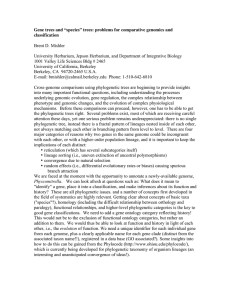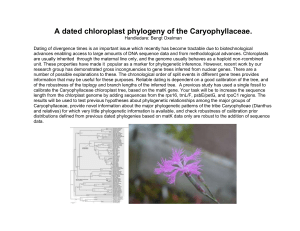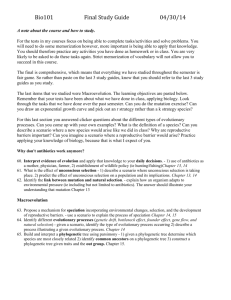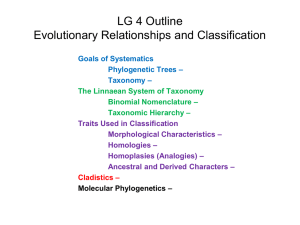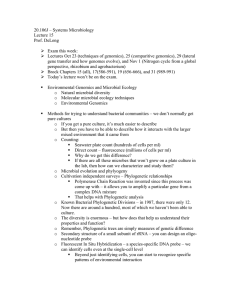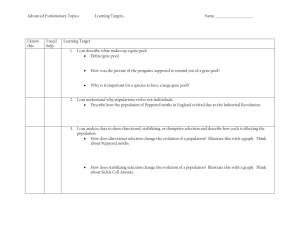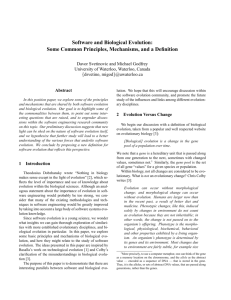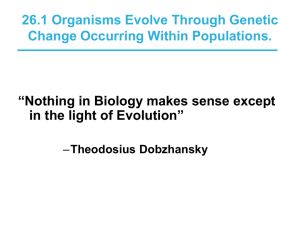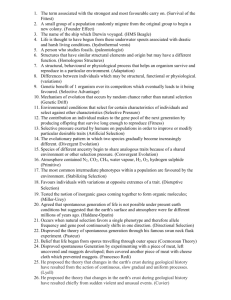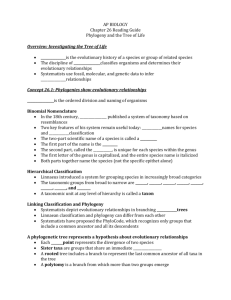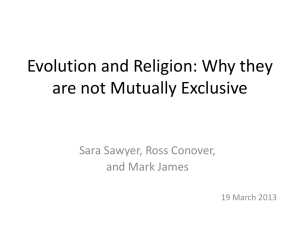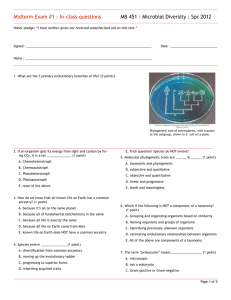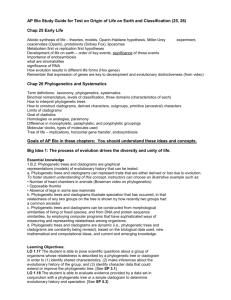Chapter 26 - Evolutionary Genetics
advertisement
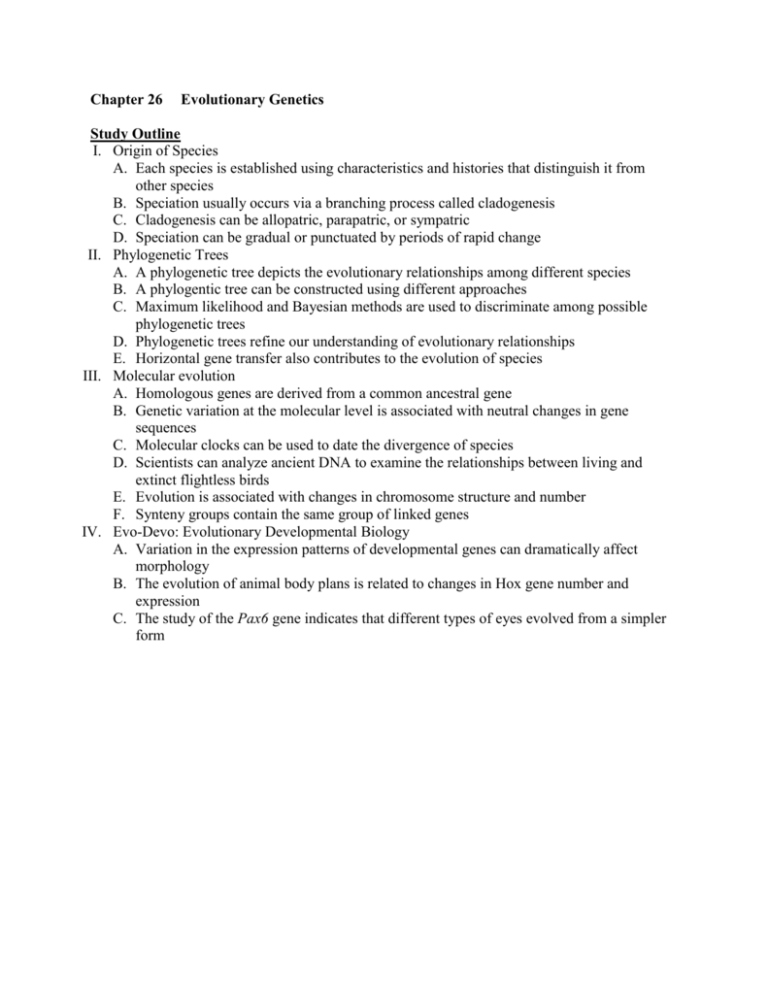
Chapter 26 Evolutionary Genetics Study Outline I. Origin of Species A. Each species is established using characteristics and histories that distinguish it from other species B. Speciation usually occurs via a branching process called cladogenesis C. Cladogenesis can be allopatric, parapatric, or sympatric D. Speciation can be gradual or punctuated by periods of rapid change II. Phylogenetic Trees A. A phylogenetic tree depicts the evolutionary relationships among different species B. A phylogentic tree can be constructed using different approaches C. Maximum likelihood and Bayesian methods are used to discriminate among possible phylogenetic trees D. Phylogenetic trees refine our understanding of evolutionary relationships E. Horizontal gene transfer also contributes to the evolution of species III. Molecular evolution A. Homologous genes are derived from a common ancestral gene B. Genetic variation at the molecular level is associated with neutral changes in gene sequences C. Molecular clocks can be used to date the divergence of species D. Scientists can analyze ancient DNA to examine the relationships between living and extinct flightless birds E. Evolution is associated with changes in chromosome structure and number F. Synteny groups contain the same group of linked genes IV. Evo-Devo: Evolutionary Developmental Biology A. Variation in the expression patterns of developmental genes can dramatically affect morphology B. The evolution of animal body plans is related to changes in Hox gene number and expression C. The study of the Pax6 gene indicates that different types of eyes evolved from a simpler form



